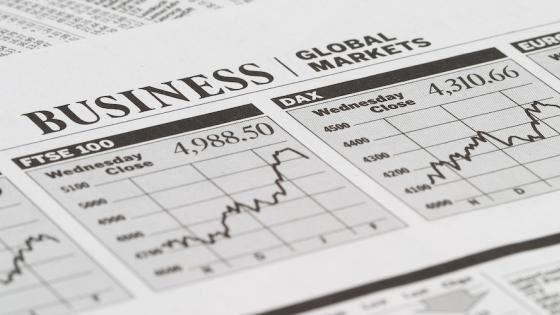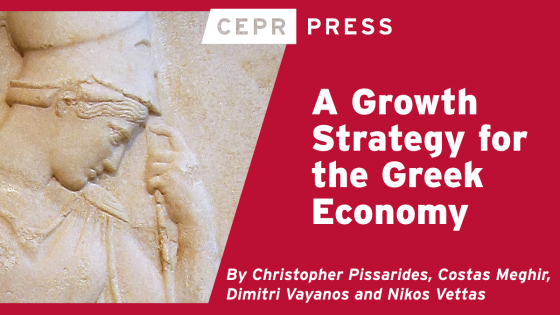The UK voted to leave the EU more than two years ago. Prior to the referendum, several studies predicted that Brexit would have important long-term economic costs for the country (e.g. Dhingra et al. 2017).
Since the referendum, a number of studies have traced out the impact the Brexit vote has already had on the UK economy. Among other findings, this research has shown that GDP growth has slowed (Born et al. 2018), that British exporters have formed fewer new trade relationships (Crowley et al. 2018), that bond premia declined in the aftermath of the referendum (Chadha et al. 2018), and that inflation has increased leading to lower real wage growth (Breinlich et al. 2017a, 2017b).
In our most recent paper (Breinlich et al. 2018), we contribute to this line of work by looking at the stock market reaction to the 2016 referendum result. We examine the day after the referendum (24 June 2016), as well as key subsequent policy announcements by UK Prime Minister Theresa May in her speeches at the Conservative Party conference in October 2016 and at Lancaster House in January 2017. Our paper is related to Davies and Studnicka (2018), who also study the impact of the referendum on stock prices.
The motivation behind our analysis is twofold. Besides providing direct evidence on share prices and the associated changes in stock market capitalisation and wealth, we hope that stock price reactions will also be useful to gauge market expectations about the future economic impact of Brexit. Stock prices are, in essence, aggregates of all information available to market participants at a given point in time. Among other things, they reflect expectations about the future profitability of individual companies and sectors. Thus, share price responses tell us about what investors expect the future economic impact of Brexit to be. This offers a useful alternative to estimates based on economic models, which form the basis of existing forecasts.
Every study looking at stock market reactions has to confront the problem that share prices vary for a number of reasons and returns can be very different from day to day for different types of firms, such as large multinationals or smaller companies mainly focused on the UK market. Thus, in a first step, we estimate ‘abnormal returns’ which adjust returns for differences in risk and other characteristics of stocks. We then use regressions to correlate these abnormal returns with indicators that capture different channels through which the referendum and subsequent policy announcements could have affected firms’ profits and hence stock prices. We use a sample of around 350 UK-listed companies.
On 24 June 2016, the first trading day after the referendum, our results indicate that stock returns were mainly driven by the sharp depreciation of the pound and the expectation of an economic slowdown. First, we find that exporters and firms reporting earnings in foreign currencies experienced higher abnormal returns, whereas importers saw lower returns. This is consistent with the depreciation boosting the sterling-denominated earnings of the many multinational firms that earn substantial revenues in foreign currencies (and are hence more likely to report in these currencies). Likewise, the depreciation raised exporters’ profits in foreign markets through increased competitiveness or higher markups, while negatively affecting importers by increasing the cost of foreign inputs.
Second, we find that firms with more affiliates in the UK, and hence greater exposure to the domestic market, experienced more negative abnormal returns; by contrast, share prices of companies in sectors that traditionally outperform the market in recessions, such as consumer staples or utilities, did significantly better on 24 June 2016. This points to investors expecting a significant economic slowdown or even a recession, in line with many pre-Brexit economic forecasts and the sharp deterioration in indicators of business confidence observed in the month following the referendum.
Somewhat surprisingly, both the share of EU immigrants in an industry’s workforce and the likely extent of future EU-UK trade barriers did not matter for abnormal returns on 24 June 2016. Given the important role immigration played during the referendum campaign, and the strong likelihood of future immigration restrictions after Brexit, one might have expected investors to rebalance portfolios away from sectors highly dependent on EU labour. Likewise, the future imposition of tariff and non-tariff barriers on EU-UK trade figured prominently in most economic forecasts before the referendum. Nevertheless, we do not find any evidence that returns were correlated with proxies for such barriers. This suggests that market participants either did not have sufficient knowledge about such barriers or considered their imposition unlikely or unimportant.
Interestingly, we find stronger evidence for the impact of future trade barriers on stock prices for our other two events, Theresa May’s speeches at the Conservative Party conference on 5 October 2016 and at Lancaster House on 17 January 2017. While our results are somewhat dependent on the exact specifications and methods used, it seems that companies in industries with potentially higher future tariff and non-tariff barriers experienced lower abnormal returns on these dates. We believe this is consistent with the idea that May’s Conservative Party conference speech, as well as other policy announcements during the conference, were the first official confirmation that the UK would be aiming for an exit from both the EU customs union and the single market (a ‘hard Brexit’). The Lancaster House speech confirmed these intentions and provided additional detail, as well as clarifying that the UK was prepared to fall back on WTO trading terms in the event of a breakdown of negotiations with the EU.
Our analysis provides new insight into investors’ expectations about the consequences of Brexit, but real economic effects will take time to materialise and market participants may be proven wrong. Fears the leave vote would trigger an immediate recession were unfounded. However, the UK’s economic growth has slowed relative to other major economies since 2016. Looking forward, the economic impact of Brexit will depend crucially on the nature of UK–EU relations after Brexit, which, at the time of writing, are still under discussion.
References
Born, B, G Müller, M Schularick, and P Sedláček (2018), “The Costs of Economic Nationalism:Evidence from the Brexit Experiment”, Working paper, University of Bonn.
Breinlich, H, E Leromain, D Novy, and T Sampson (2017a), “The Brexit Vote, Inflation and UK Living Standards”, Centre for Economic Performance Brexit Analysis No. 11, London School of Economics.
Breinlich, H, E Leromain, D Novy, and T Sampson (2017b), “The Consequences of the Brexit Vote for UK Inflation and Living Standards: First Evidence”, Technical paper, London School of Economics.
Breinlich, H, E Leromain, D Novy, T Sampson, and A Usman (2018), "The Economic Effects of Brexit - Evidence from the Stock Market”, CEPR Discussion Paper 13147.
Chadha, J, A Hantzsche, and S Mellina (2018), Bremia: A Study of the Impact of Brexit Based on Bond Prices, National Institute of Economic and Social Research.
Crowley, M, O Exton, and L Han (2018), ”Renegotiation of Trade Agreements and Firm Exporting Decisions: Evidence from the Impact of Brexit on UK Exports”, Cambridge-INET working paper.
Davies, R, and Z Studnicka (2018), “The Heterogeneous Impact of Brexit: Early Indications from the FTSE”, European Economic Review ,forthcoming.
Dhingra, S, H Huang, G Ottaviano, J P Pessoa, T Sampson, and J Van Reenen (2017), “The Costs and Benefits of Leaving the EU: Trade Effects”, Economic Policy 32: 651-705.






